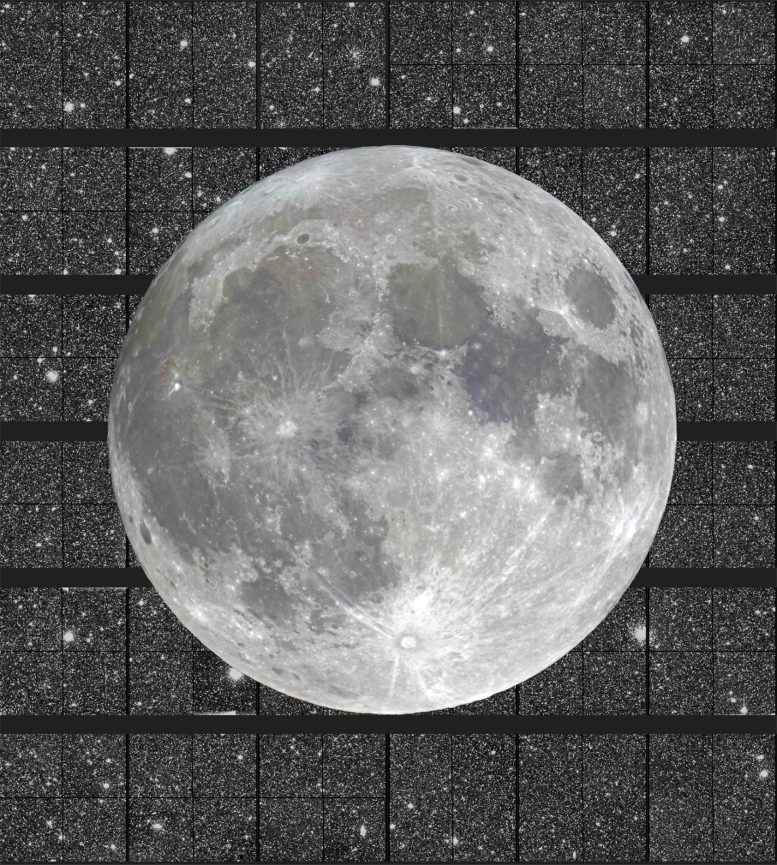
This figure shows an overlay of an image of the Moon on top of an image of the sky recorded simultaneously by the 36 detectors of Euclid’s VIS instrument. The VIS image was obtained in one single shot during the initial months of testing of the spacecraft. It illustrates that the area of the sky that Euclid can observe within one pointing of the telescope, is larger than that of the full Moon. The aperture angle of the Moon’s diameter is approximately 0.5 degrees. Euclid’s gaze captures in one single observation a square area of the sky of about 0.7 times 0.7 degrees. Credit: ESA/ESA/Euclid/Euclid Consortium/NASA, S. Brunier, CC BY-SA 3.0 IGO
Euclid, the European Space Agency’s dark Universe detective, was launched on July 1, 2023. It has recently showcased its first full-color, stunning images of the cosmos, boasting powerful imaging capabilities thanks to its unique optics.
Telescope and Imaging Technology
Euclid’s telescope and its optics are specifically designed to capture a large view of the sky in a single shot. This feature is vital for its mission, which aims to map over one-third of the celestial sphere with high sensitivity within a six-year timeframe.
Image Comparison and Coverage
The accompanying figure displays an overlay of an image of the Moon atop a sky image simultaneously captured by the 36 detectors of Euclid’s VIS instrument. This image, acquired in a single shot during the spacecraft’s early testing phase, demonstrates Euclid’s ability to cover an area larger than the full Moon in just one telescope pointing. The Moon’s diameter spans approximately 0.5 degrees, whereas Euclid can observe a square area of the sky measuring about 0.7 by 0.7 degrees in a single observation.
VIS and NISP Instrumentation
To achieve this expansive coverage, VIS is equipped with 36 CCDs (Charge Coupled Devices, a type of camera sensor), arranged in a 6×6 grid; each sensor having more than 4000×4000 pixels. The NIPS instrument is fitted with a 4×4 grid of near-infrared sensors of more than 2000×2000 pixels each. While VIS measures the shapes of the galaxies, NISP measures their brightness (and how it changes over wavelengths), requiring a smaller number of detector arrays that have larger pixels.
Euclid is the only telescope that currently can observe such a large area of the sky in one single sitting with such sharpness, in visible and near-infrared light.

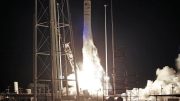

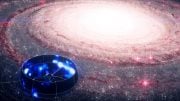
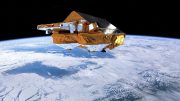

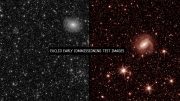

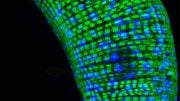
Be the first to comment on "Dark Universe Detective: Euclid’s Wide-Eyed Look at the Cosmos"